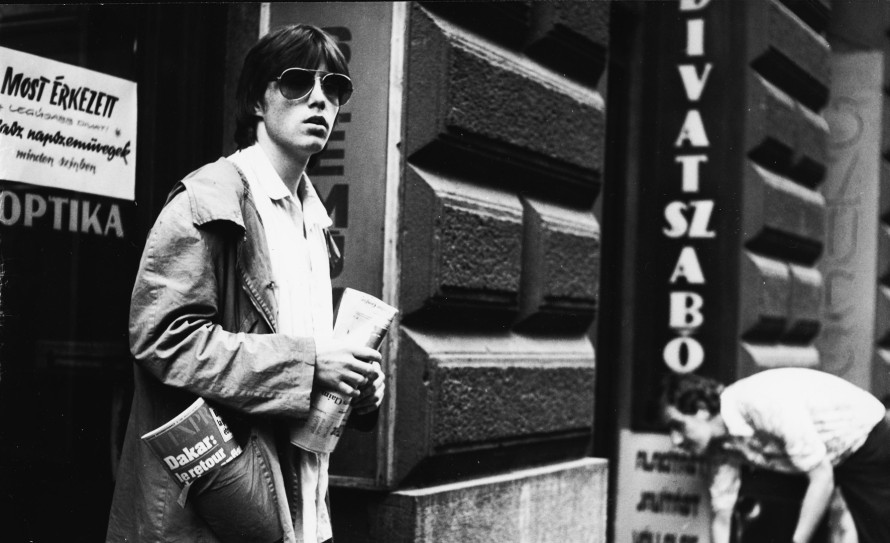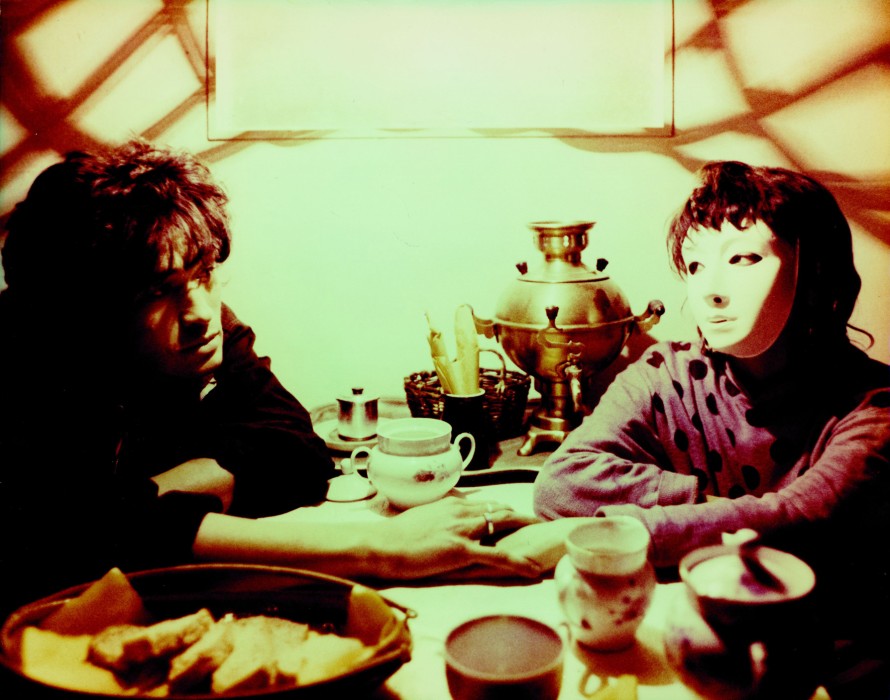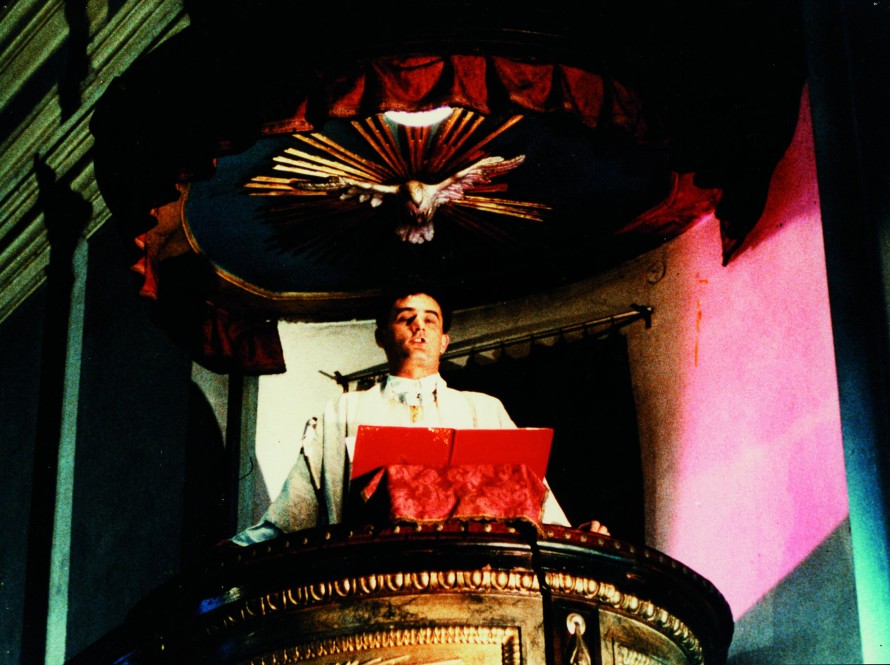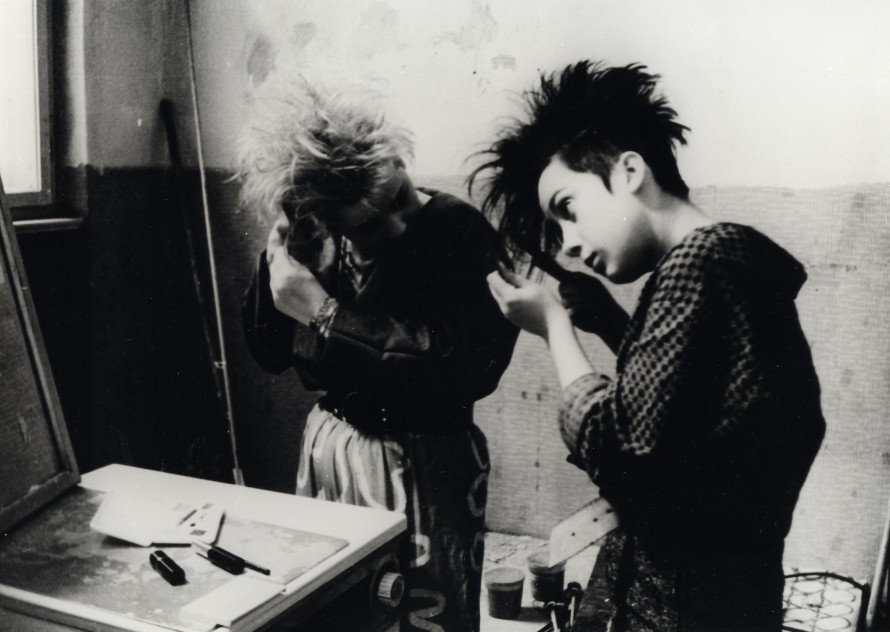2009 | Special Presentations
Seismographs of Social Change: Special Series - After Winter Comes Spring
On the occasion of the twentieth anniversary of the fall of the Wall in 1989, the special series “After Winter Comes Spring – Films Presaging the Fall of the Wall” is celebrating its premiere at the 2009 Berlinale before going on a Germany-wide tour. Initiated by the Federal Cultural Foundation and the Deutsche Kinemathek, the series will show films produced between 1977 and 1989 in the former Eastern bloc countries as well as in West Germany that presage in a singular way the upheavals and the impending collapse of the “actually existing” socialist systems. Claus Löser, curator of the series, talks about the widely diverse production conditions in the different countries, the ability of film to convey social realities, and the artistic aspects of the films selected.

A kis Valentinó (Little Valentino), Hungary 1979, D.: András Jeles
It must not have been an easy task to retrospectively select films in their capacity as harbingers of complex social transformations. What were the greatest difficulties you encountered when putting together the programme?
Claus Löser: The greatest challenge was striking a balance between subjective taste and the goal of a certain degree of representativeness. On the one hand, the films are supposed to portray the social reality in the period leading up to the fall of the Wall; on the other, I was particularly interested in the artistic view of things, the way in which the times were reflected in the films. When I had to choose I gave preference to the artistically daring films over the politically daring ones.
Another thing is that when Rainer Rother asked me to curate the special series, I thought that fifteen different programme items seemed like quite a lot. But I quickly came to the conclusion that the opposite was the case. If you want to cover the entire Eastern bloc, while at the same time taking into consideration the specific contexts in the various countries, fifteen slots are not very many at all.
Because of the diversity of the contexts?
I would say because of the great lack of synchronicity. On the one hand there were countries that were already relatively liberalized in the seventies and early eighties, with Poland and Hungary taking the lead. In other countries it is extremely difficult to find anything that prefigures the social transformation and upheaval that was to come—but that is the goal of the entire programme, to show films that already carry within themselves signs of this change.
So there is no real danger then of drawing (and codifying) an overarching, historical line here?
No, because it isn’t even possible to make a representative selection. In that sense what we have put together can only be considered a first outline traced from the perspective of this time on film history.
Historical documents of art and cultural policy
Would you say that the medium of film is particularly suitable for conveying history? In that, for instance, it has specific qualities as a historical repository of everyday culture and social reality? Where might we find these qualities in the “After Winter Comes Spring” series?
Like every art form, film has the capacity to ferret out social trends. I like to think of a seismograph in this context. In some lucky instances, films can function like seismographs, without this even having to be the conceptual intention of the filmmakers. Those elements in films that point to a future event, transformation, or upheaval are not necessarily part of the director’s plan.
In the case of “After Winter Comes Spring,” which primarily includes films from socialist countries, a defining particularity surely lies in their close proximity to the state. This closeness meant that film production was quite lethargic, since it was tied to an enormous technical and administrative apparatus. We do find this in Western countries as well, however. In the East bloc film production was also subject to cultural policy, which was always a reflection of party policy. That is another factor making it difficult to filter out the particular characteristics of the individual countries.
There were always more interesting films made in the Soviet Union, for instance, but especially from 1985/86 with Gorbachev as General Secretary of the Communist Party. A very high degree of liberalization was achieved then in a short period of time. Censorship was relaxed and the internal pressure that had been building up over the years was suddenly released—to a much greater degree than in the sixties, when Tarkovsky, Shukshin, Parajanov, and others spearheaded the first big thrust in post-war Soviet cinema. Historically speaking, then, there was only a very brief window in which artistic quality coincided with explosive content.

Igla (The Needle), USSR 1988; D: Raschid Nugmanow
The genre film and crime thriller Die Nadel by Rashin Nugmanov, filmed in 1988 and set in Alma-Ata in Kazakhstan, is an example of such a happy coincidence. After another director withdrew from the project, the material more or less fell into the film school graduate’s lap, who turned this harmless, conventional thriller into an unbelievably energetic, almost revolutionary art film that makes extensive use of avant-garde cinema tropes. What’s more, The Needle became one of the most successful Soviet films ever made.
In Poland, on the other hand, things were quite different: martial law was declared in December 1981 and was not rescinded until February 1989. The craziest films were made during this time period, with a political openness and radicality that would have landed an East German director in jail. Censorship was effectively abolished in Poland in 1987. And all this under martial law, which seems absurd and hardly conceivable from today’s perspective.
Breaking through into reality
Is there a connection between state influence on filmmaking and film language? Could we say, for instance that “the greater the role of censorship, the more metaphorical the form of cinematic social critique”?
You can’t really make that kind of a generalization, since the various countries greatly differed in this respect as well. A kind of secret language did actually develop in the GDR, in the form of codes, hidden references, and metaphors. East German film language is extremely allegorical—we often find, for instance, characters that do not work on a psychological level at all, but always stand proxy for something else. Director Rainer Simon breaks the code, to a certain extent, in Jadup und Boel by working more with realism and setting the story in the present rather than in the Middle Ages or in Classical Antiquity. This allows for the sudden break-through of a bit of reality—which is precisely why the film was banned.
The criticism expressed in films is not always absolute. Today we live in a culture in which criticism, for the most part, is seen as something positive because it functions as a tool for improvement. Did the films in the special series also fulfil that kind of role, or did they mostly strive for absolute criticism?
That is a significant difference indeed. In an open society like we have today, criticism is a fundamental element. We may regret this at times, as every gesture of protest almost inevitably becomes integrated into society or the market. This was definitely not the case in the East bloc countries. The valuable, critical energy that was formulated in the films was seen as hostile rather than useful. Ultimately this was one of the things that led the system to break down—it was completely rigid and not open and flexible.

Gábor Bódy in his Film Kutya éji dala (Dog’s Night Song), Hungary 1983
The historical moment of surprise when the Wall fell and the East bloc collapsed seems to indicate that no one seriously expected a systems change to be possible. Is this also reflected in the films?
Certainly—and that is a real paradox if we stop and consider the brief time span in which this historical change took place: a few weeks in the spring and in the autumn of 1989. But there is often the subtle awareness in these films that a lot more had already changed “underground” than could be felt “above ground.” After all, these radical transformations would not have been possible otherwise. At the same time we have to be clear about the fact that these are exceptional cases. The films in the “After Winter Comes Spring” series do not represent the state of the respective national cinemas, but are primarily films that went against the general trend.
Generating a heightened awareness of Eastern European filmmaking must be a welcome side effect of the series.
Of course. There is a great injustice in film historiography here. Much that came from the East was simply not given the attention it deserved—the Polish director Piotr Szulkin for instance, whose The War of the Worlds: Next Century we selected for the programme. He made impressive fantasy and science fiction films, but none of his work was ever screened on West German TV or in West German cinemas. It is really unfair that no one knows these people. There certainly still is a lot to discover.
Thematically many of the films in the series describe the melancholy of the everyday, which contrasts sharply with the desire to break out, to be liberated from this melancholy.
A key film here is Dog’s Night Song by Gábor Bódy, which is a pioneering film, not only for Hungary or the Eastern bloc but on a European level. You can, if you like, compare it to other early postmodern films, such as those by Peter Greenaway or David Lynch—not so much stylistically, but in the way in which it breaks down classical narrative structures. This disruption of conventional patterns can certainly also be linked with the disruption of social relations, which becomes particularly clear in Dog’s Night Song.

Winter adé (After Winter Comes Spring) by Helke Misselwitz, GDR 1988
Unprecedented openness
Why did you decide to name the series after the film After Winter Comes Spring by Helke Misselwitz?
After Winter Comes Spring was shown at the Leipzig Documentary Film Festival in 1988, exactly one year before the revolution in Leipzig in September and October 1989. Even then perceptive audience members could sense that the openness in the film had a different quality—people were suddenly unafraid of presenting themselves openly in front of the camera. After Winter Comes Spring thus gives expression to a transparency and clarity that was otherwise missing in GDR society.
After Winter Comes Spring received a prize in Leipzig and is one of several award-winning films in the series. Did political motives play a role in the bestowal of this award?
Yes, but in a contradictory sense. Everyone could tell immediately that this was a very important film. Especially the international guests agreed that it deserved to win the main prize. When it “only” won the Silver Dove, it turned out that the GDR television representatives had tried to keep it from being honoured. So there were very disparate and also very contrary forces at work here.
Did the non-award-winning films in the series also cause a stir, specifically those from the “underground”, as it is called in the press release?
Not in the GDR. There it was more of a secret parallel film history that developed. Here we also have a mark of a more open versus a more closed society. Consider Poland and Hungary, where the state even sponsored experimental film. People like Zbigniew Rybczyński or, before him, Jan Lenica and Walerian Borowczyk made films in the official studios. In the GDR, on the contrary, there was no such thing as experimental film because it was more or less impossible for self-taught filmmakers to break into the closed system. You had to have gone to film school if you wanted to make films. In the Soviet Union it was the same, which is why the subculture there was also more “detached” from the mainstream and from state culture. One thing is particularly astonishing about the underground and experimental films in the series: filmmakers working in countries with very different conditions nevertheless came up with quite similar formal solutions. All these films work with found footage or use material from TV or from popular scientific films; they paint over these images; they use similar settings, and so forth. Despite the fact that they didn’t know anything about each other, there are a lot of similarities.
What about the animated films in the series? What discoveries are in store for us there?
The common denominator of the animated films are the themes they negotiate—all without using words: themes such as speechlessness, stagnation, being locked up. This even applies to the West German Oscar-winner Balance, which was—hardly a coincidence—made in 1989. The film can easily be read as a metaphor of equilibrium in the time of the Cold War. Or Tale of Tales by Yuriy Norshteyn, whose thirty minutes makes it the longest animated film in the series. The film essentially posits war, the Second World War, as the basis for a bipolar model of the world. Taking a traumatized society structured by war as their starting point, the animated films belong together despite their differences—and are paradigmatic for all the films in “After Winter Comes Spring”.